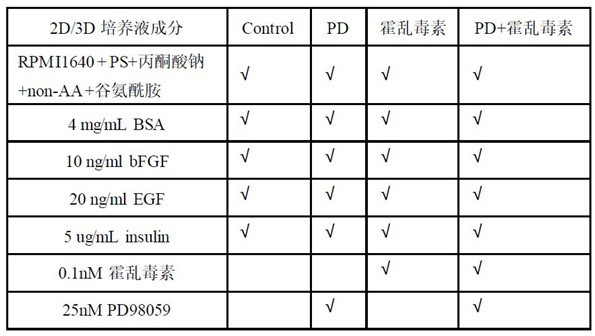Method for establishing human-derived tumor xenograft model cultured in vitro
A xenotransplantation and establishment method technology, which is applied in the field of establishment of human-derived tumor xenograft models, can solve the problems of difficult model operation, complicated operation, and loss of tumor heterogeneity, so as to improve the success rate of transplantation and shorten the modeling time , the effect of reducing tissue apoptosis
- Summary
- Abstract
- Description
- Claims
- Application Information
AI Technical Summary
Problems solved by technology
Method used
Image
Examples
specific Embodiment approach
[0039] A method for establishing a human-derived tumor xenograft model cultured in vitro, the method for establishing comprises the following steps:
[0040] 1) Collect surgically resected tumor tissue samples; all patients were diagnosed with malignant tumors by pathological examination before operation;
[0041] 2) Take a size of 1-3cm 3 The tumor tissue specimens were stored temporarily in the pre-cooled antibiotic-containing culture medium; the culture medium was serum-free RPMI-1640 culture medium;
[0042] 3) Then complete the low-temperature transportation within 2 hours and prepare for further processing;
[0043] 4) In the aseptic operating table, cut the tumor tissue obtained from the culture medium in step 2) into the size of rice grains;
[0044] 5) The tumor tissue is washed with PBS containing antibiotics, and then placed in a 48-well plate for culture; then the culture medium is added to the 48-well plate, and then the regulatory kinase inhibitor PD98059 is ad...
PUM
 Login to View More
Login to View More Abstract
Description
Claims
Application Information
 Login to View More
Login to View More - R&D
- Intellectual Property
- Life Sciences
- Materials
- Tech Scout
- Unparalleled Data Quality
- Higher Quality Content
- 60% Fewer Hallucinations
Browse by: Latest US Patents, China's latest patents, Technical Efficacy Thesaurus, Application Domain, Technology Topic, Popular Technical Reports.
© 2025 PatSnap. All rights reserved.Legal|Privacy policy|Modern Slavery Act Transparency Statement|Sitemap|About US| Contact US: help@patsnap.com



